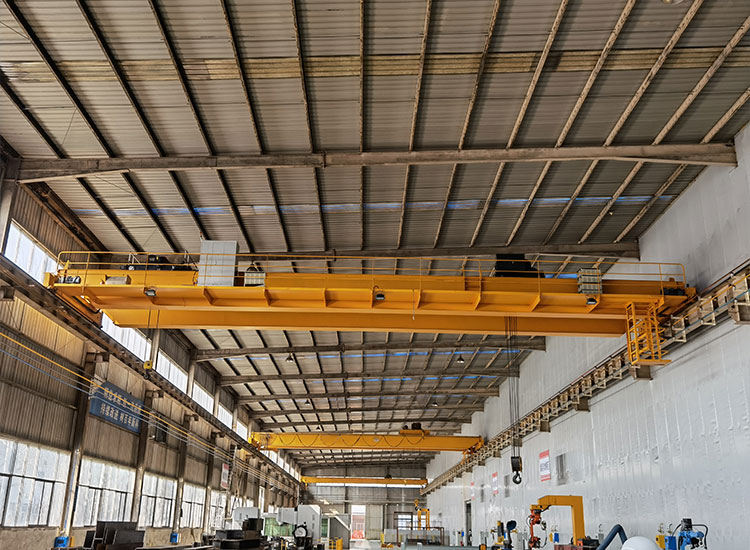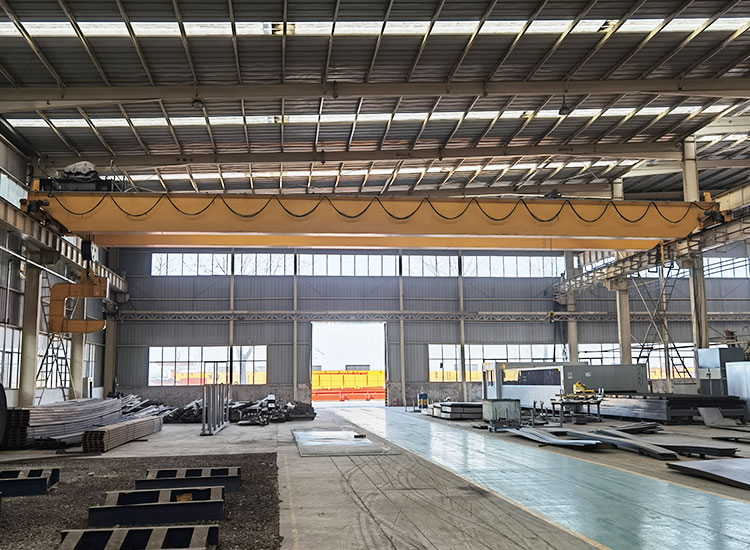Selecting the appropriate lifting capacity for an overhead crane is a critical decision that directly impacts safety, efficiency, and operational success. Overhead cranes are essential in various industries, including manufacturing, construction, logistics, and power plants, where heavy materials and equipment need to be moved with precision. This guide will walk you through the key factors to consider when determining the right lifting capacity for overhead crane for sale.

1. Understand Your Lifting Requirements
Evaluate the Types of Loads
Start by identifying the types of loads you plan to handle. Are you lifting lightweight materials, heavy machinery, or a mix of both? Knowing the nature and dimensions of the loads helps in selecting the appropriate crane specifications.
Determine the Maximum Load Weight
The lifting capacity of a crane should exceed the heaviest load you plan to lift. For instance, if the maximum load weight is 10 tons, a 15 ton overhead crane provides an additional safety margin.
Consider Load Distribution
Unevenly distributed loads can create additional stress on the crane. Understanding load distribution patterns ensures that the crane’s design can accommodate these factors safely.
2. Assess the Application Environment
Indoor or Outdoor Use
Determine whether the crane will operate indoors or outdoors. Outdoor applications may require additional considerations, such as weather-resistant materials and higher lifting capacities to handle dynamic forces like wind.
Working Space and Constraints
Evaluate the available working space, including ceiling height, runway length, and other spatial limitations. Compact environments may require custom crane designs with optimized lifting capacities.

3. Factor in the Frequency of Use
Operational Duty Cycle
The crane’s duty cycle, also known as the service classification, indicates the frequency and duration of use. A crane used continuously in a high-production facility needs a higher duty rating compared to one used occasionally.
Workload Spectrum
Consider the range of load weights the crane will handle. If the crane frequently operates at or near its maximum capacity, selecting a heavy duty overhead crane ensures longevity and safety.
4. Incorporate Safety Margins
Account for Unexpected Factors
A safety margin protects against unexpected load increases, wear and tear, and operational errors. Industry standards, such as those from the Crane Manufacturers Association of America (CMAA), often recommend a 20-25% margin above the maximum anticipated load.
Compliance with Standards
Ensure that the crane meets local and international safety standards, such as OSHA, ANSI, or ISO, which often dictate minimum safety factors for lifting equipment.
5. Consult with Crane Manufacturers and Engineers
Leverage Expert Advice
Engage with a reputable overhead eot crane manufacturer or engineer who can evaluate your specific requirements and recommend suitable models. Custom solutions can be designed for unique applications, ensuring optimal lifting capacity.
Review Technical Specifications
Analyze technical data sheets and performance charts to ensure the crane meets your lifting, operational, and environmental needs.
6. Budget Considerations
Initial Investment vs. Long-Term Costs
While it may be tempting to choose a lower-capacity crane to save costs, doing so can lead to increased maintenance, repairs, and operational risks. Investing in the right capacity upfront minimizes long-term expenses.
Financing Options
Explore financing or leasing options that allow you to acquire a higher-capacity crane within budget constraints.
7. Plan for Future Growth
Anticipate Operational Changes
Consider potential business expansions or changes in operations that may require higher lifting capacities in the future. Selecting a slightly larger capacity now can prevent costly upgrades later.
Scalability
Opt for modular crane systems that can be upgraded or expanded as your lifting needs evolve.
8. Test and Verify
Load Testing
Before commissioning the crane, conduct load testing to verify its lifting capacity and ensure it operates safely under maximum loads.
Regular Maintenance Checks
Routine inspections and maintenance help identify wear and ensure the crane continues to operate within its rated capacity.
Case Study: Choosing the Right Capacity
A steel manufacturing company needed an overhead crane for lifting steel coils. Their heaviest coil weighed 25 tons, but they occasionally handled additional equipment weighing up to 5 tons. They opted for a 35-ton crane to account for the maximum load, safety margins, and future capacity needs. This decision ensured safe operations, reduced downtime, and supported business growth.
Conclusion
Choosing the right lifting capacity for your overhead crane is a multi-faceted process that requires careful evaluation of your load requirements, operational environment, safety considerations, and future growth plans. By taking the time to assess these factors and consulting with experts, you can select a crane that not only meets your current needs but also supports long-term operational success. Investing in the right lifting capacity ensures enhanced safety, reduced costs, and improved productivity across your operations.